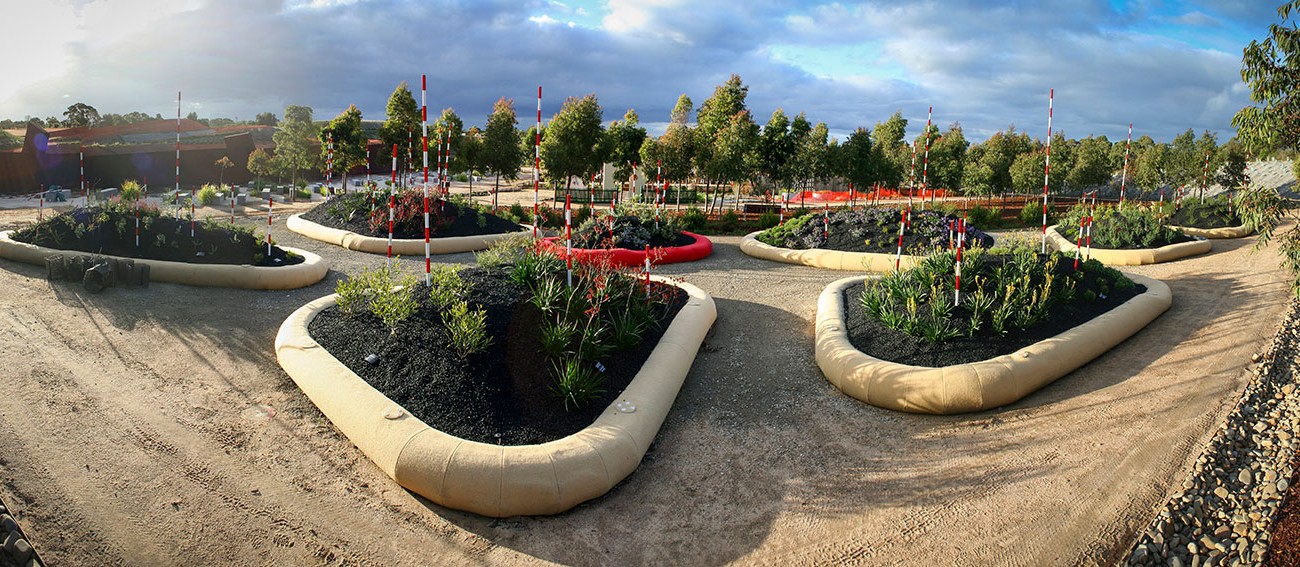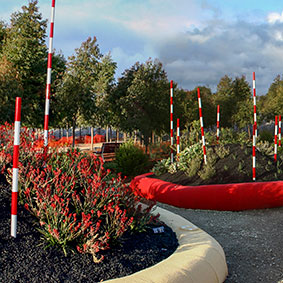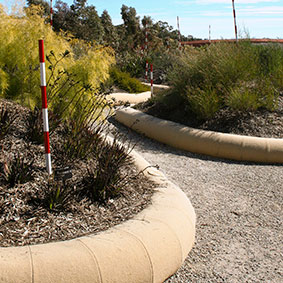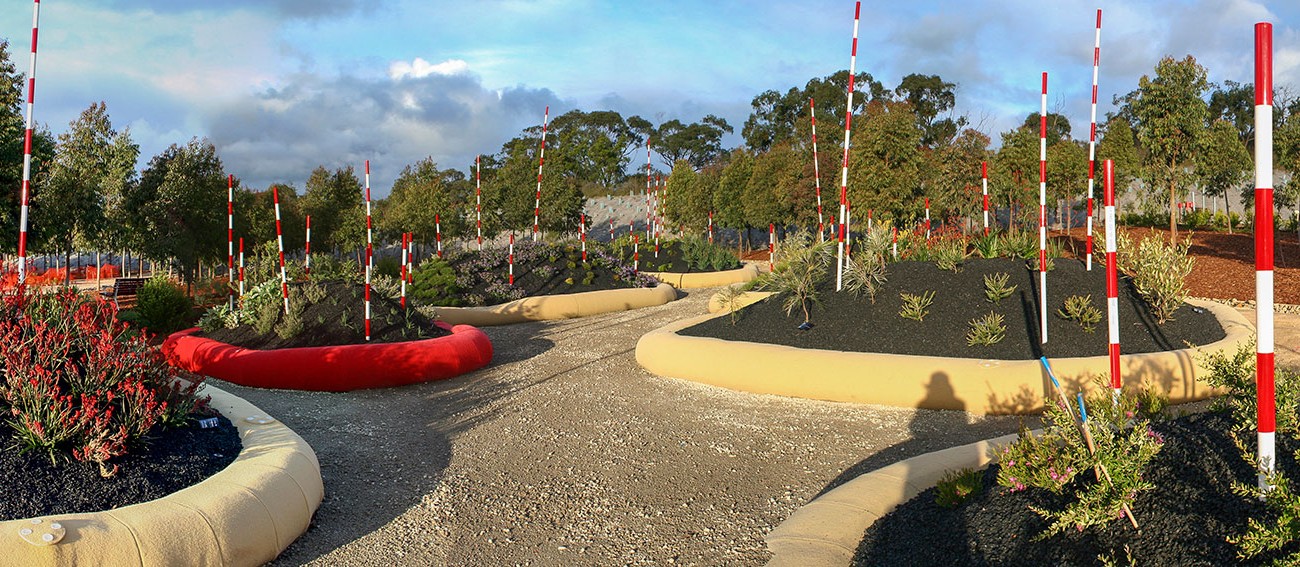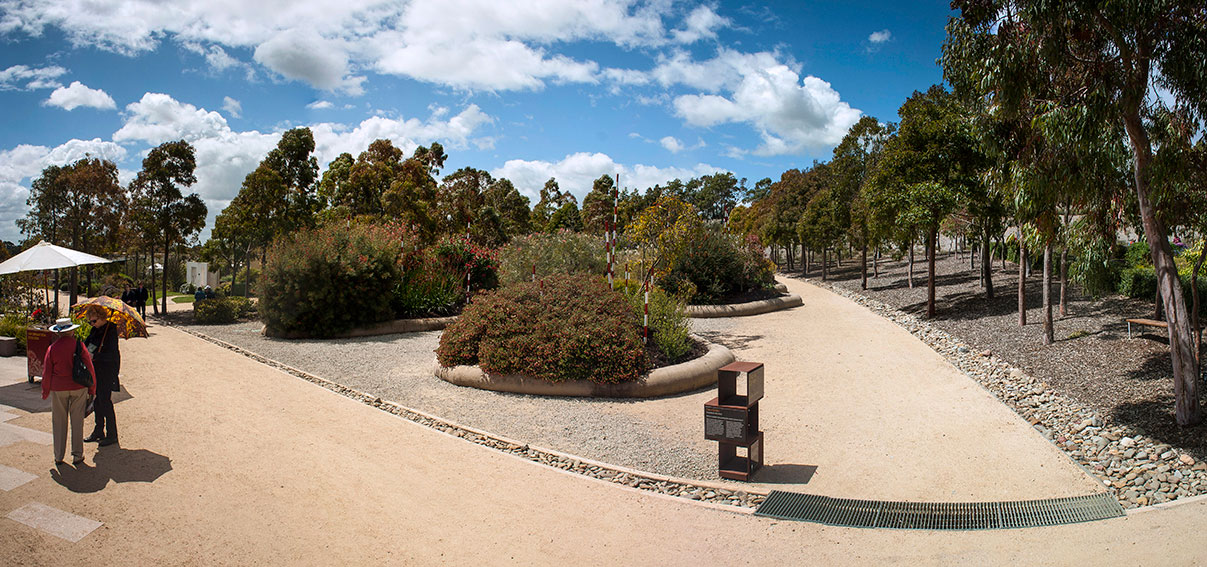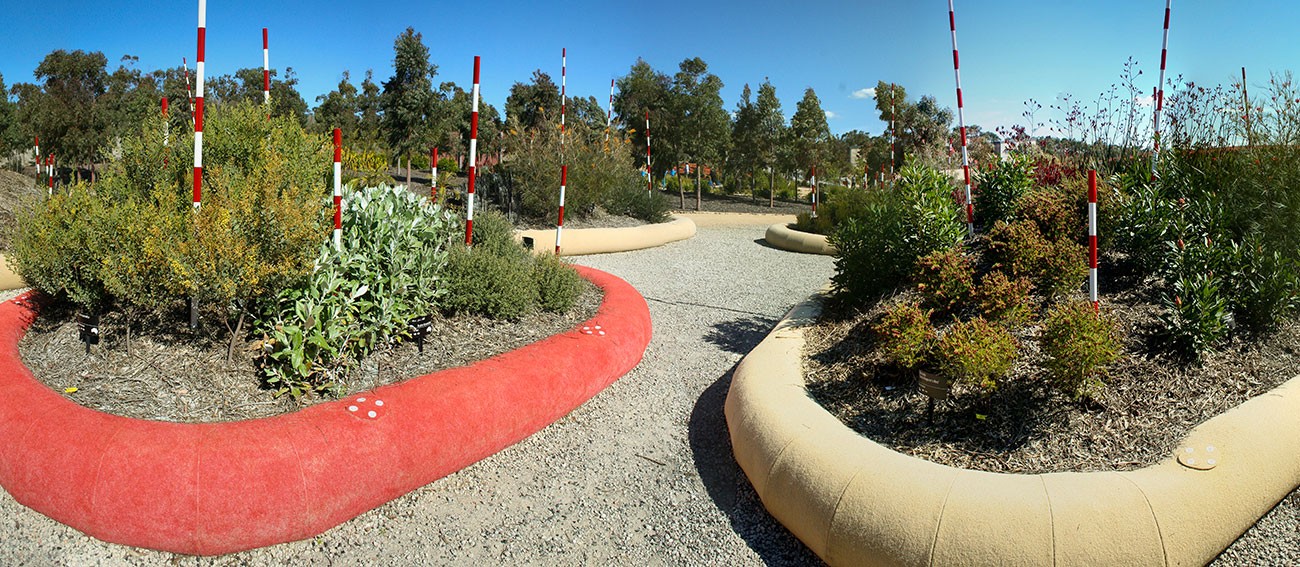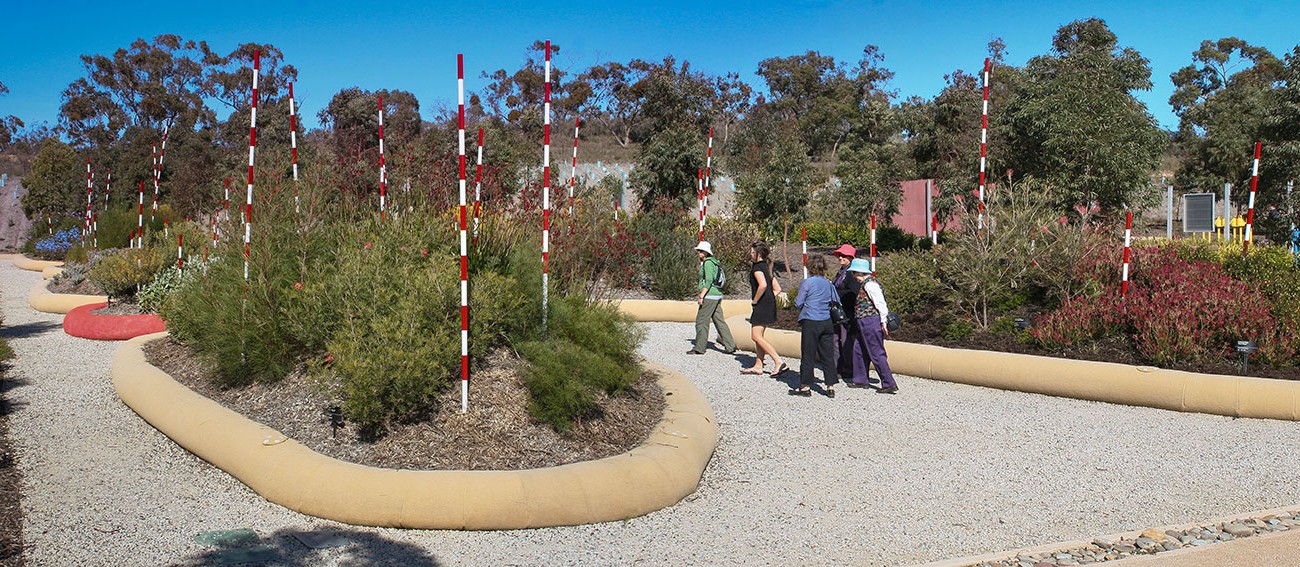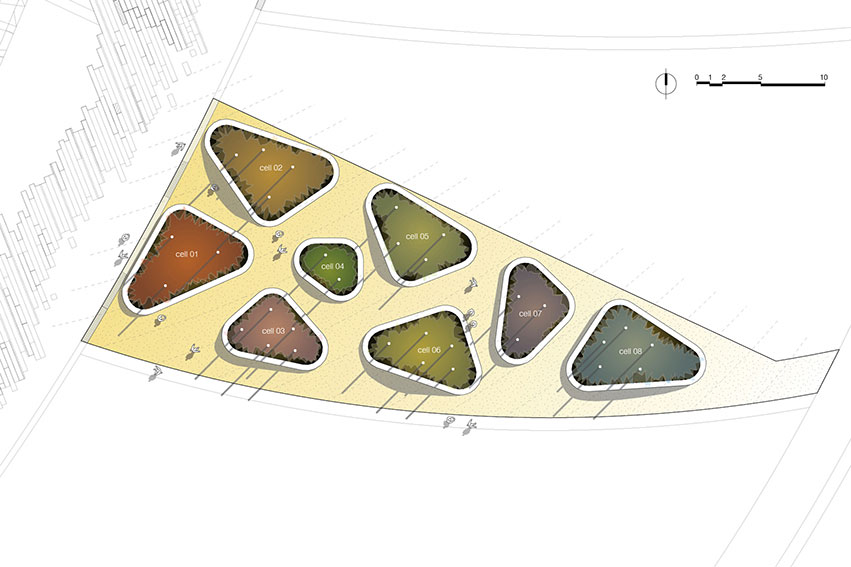Future Garden
Techniques such as cultivars, grafting, hybrids and more recently plant genomics (bioengineering) all seek to alter the naturally occurring form of a plant in some fundamental, synthetic way in the search for something new and improved.
This garden is an exploration into synthetic Australian plant production and how this activity may support the advancement of rare and endangered spices. It recognises that the real frontier for horticulture change in the future will occur at the cellular (genetic) level.
This garden represents a scale shift: a synthetic, cellular landscape planted with species of native plants that are the result of different levels of artificial manipulation. Particular species are planted en masse within a series of raised mounds that emerge from the ground. Like cells within the blood stream, visitors circulate through and around these raised mounds on a system of pathways. The choice of materials for mulch pathways and edging includes a range of synthetic and recycled products, including as crushed concrete, and plastics bottles.
Client
Client: Royal Botanic Gardens, Melbourne
Year
2004-5
Awards
Winner, Exhibition Garden Design Competition, RBG, 2003
Best Environmental Landscape, Architectural Excellence in the South East Awards, 2006
Chairman’s Premier Award, Architectural Excellence in the South East Awards, 2006
Merit Award in Design, AILA Victorian Chapter, 2007
